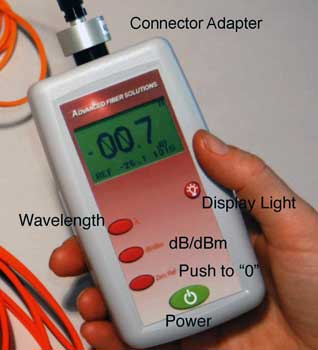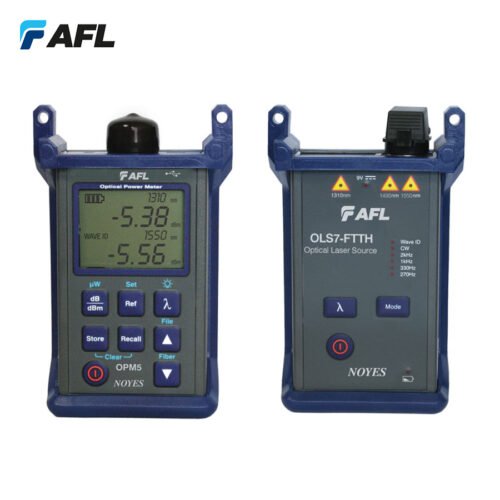All You Required to Find Out About Robotic Vision and Its Applications in Advanced Optical Dimension Systems
Robotic vision represents a considerable development in the intersection of computer system vision, expert system, and artificial intelligence. This modern technology enhances the precision of optical dimension systems, making it possible for real-time information evaluation and enhanced quality assurance. Its effect covers several industries, from making to health care. Nevertheless, the developing landscape of robotic vision questions concerning future capabilities and applications (fibre testing equipment). What technologies exist ahead in this transformative area?
Understanding Robotic Vision: Key Concepts and Technologies
Robotic vision encompasses the modern technologies and methods that enable machines to interpret and understand aesthetic info from their atmosphere. This field incorporates elements of computer system vision, expert system, and artificial intelligence to facilitate automatic decision-making based on aesthetic data. Trick principles include picture handling, which includes the enhancement and evaluation of images to remove significant features, and item recognition, which permits machines to identify and identify objects within a scene.

The Assimilation of Robotic Vision With Optical Measurement Equipments
As industries increasingly require accuracy and effectiveness, the combination of robotic vision with optical measurement systems has actually become a transformative technique. This synergy permits robotics to view and interpret their environments, boosting the ability of optical dimension systems to assess and assess objects with unrivaled accuracy. By outfitting optical sensing units with sophisticated imaging technologies, robot vision makes it possible for real-time information collection and handling, assisting in prompt adjustments to dimension specifications.
Additionally, the mix equips automated systems to discover variants in dimensions, surface area high quality, and positioning, which are important in quality assurance procedures. Boosted formulas, such as machine understanding, more boost this assimilation by boosting the systems' ability to adapt to various settings and circumstances. Subsequently, the assimilation not only simplifies measurement processes yet likewise lessens errors, making sure that items fulfill strict sector requirements, therefore solidifying the function of robot vision in the future of optical dimension systems.
Applications of Robotic Vision in Production
In modern-day production environments, making use of vision systems has reinvented production procedures by allowing machines to execute jobs with impressive accuracy and rate. Robotic vision systems are significantly employed for quality control, where they inspect items for defects and warranty adherence to requirements. These systems make use of electronic cameras and progressed formulas to examine products in real-time, significantly decreasing the danger of human error.
Additionally, robot vision assists in automation in setting up lines, permitting robotics to properly determine elements and construct them with very little downtime. This modern technology likewise improves inventory monitoring, as vision systems can check stock levels and detect inconsistencies, assuring a seamless supply chain.
Robotic vision help in the application of clever manufacturing facilities, where data from vision systems can be integrated with various other technologies to optimize operations (fibre testing equipment). On the whole, the applications of robotic vision in manufacturing demonstrate its critical duty in improving efficiency, high quality, and productivity across different sectors
Robotic Vision in Health Care: Transforming Person Care

In rehabilitation, robot vision help in checking person progression and customizing treatment sessions to private requirements. It sustains physician by automating tasks such as data collection and person tracking, enabling more time to concentrate on direct individual communication. Furthermore, robot vision enhances telemedicine by allowing remote diagnosis and online examinations, connecting the void between patients and health care suppliers. Generally, the application of robot vision in health care is transforming read person treatment, causing boosted outcomes, performance, and client complete satisfaction.
Future Trends and Growths in Robotic Vision Innovation
The fast evolution of robot vision technology assures to even more boost its applications across numerous industries, consisting of healthcare. Future trends indicate a considerable shift towards including man-made knowledge and artificial intelligence, making it possible for systems to find out from substantial datasets and improve precision over time. Boosted sensor technologies and deep learning algorithms are expected to improve item recognition capacities, allowing robotics to analyze complex atmospheres better.

In addition, the assimilation of increased reality (AR) with robotic vision will likely reinvent just how robots help in procedures and diagnostics. This synergy will assist in real-time data visualization, improving decision-making procedures. Additionally, miniaturization of parts will certainly result in more small and flexible robot vision systems ideal for a range of tasks. As these advancements unfold, sectors will certainly witness enhanced automation and efficiency, solidifying robotic vision as a cornerstone of innovative technical remedies.
Regularly Asked Concerns
What Are the Key Parts of a Robotic Vision System?
The primary components of a robotic vision system consist of video cameras for image capture, processors for data analysis, formulas for interpretation, and actuators for activity. Together, these components enable robotics to regard and engage with their atmosphere efficiently.
How Does Robotic Vision Improve Precision in Measurements?
Robotic vision boosts dimension accuracy by utilizing advanced imaging innovations, enabling precise things detection and spatial analysis. This capacity reduces human error, raises repeatability, and allows for real-time adjustments, eventually improving total measurement reliability and performance.
What Industries Benefit Most From Robotic Vision Innovation?
Various markets benefit substantially from robotic vision innovation, consisting of manufacturing, health care, farming, and logistics. These fields use boosted accuracy, effectiveness, and use this link automation, causing boosted efficiency and reduced operational costs in their respective procedures.
Can Robotic Vision Equipments Job in Low-Light Issues?
Robotic vision systems can certainly work in low-light conditions, utilizing innovative sensors and formulas to improve image clarity. This capacity permits them to do effectively in numerous atmospheres, including commercial and monitoring applications, despite minimal lighting.
What Are the Prices Related To Executing Robotic Vision?
The expenses related to carrying out robot vision vary substantially, affected by parts such as electronic cameras, software, and integration. Extra costs consist of maintenance, training workers, and possible upgrades to existing systems, which can gather with time.